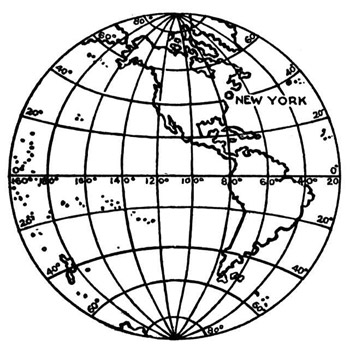 Unit Warm-Up: Euclidean and Non-Euclidean Geometry
Unit Warm-Up: Euclidean and Non-Euclidean Geometry

Euclid
In this course, we are studying Euclidean Geometry. That is, the geometry attributed to the mathematician Euclid, sometimes referred to as the father of modern geometry.
Euclidean Geometry is all on a flat surface, like your paper. Certain rules apply when working on a flat surface.
For example, how many degrees do the three angles in a triangle add up to?
![]()
It is important to note that Euclidean Geometry is not the only type of geometry that mathematicians study.
There are many types of non-Euclidean geometry. The figure below shows a globe.

Latitude and longitude Lines
You may remember from your social studies classes that a globe shows lines of latitude and longitude. Because they are on a spherical surface, the rules of Geometry are different from those covered in this section.
Take a look at a sphere. You could use a ball, a globe, or whatever spherical object you have. Draw a line starting from the top point, down to what would be the equator. Now draw a second line from that point on the equator, about one-fourth of the way around the sphere. From this point, connect a third line back up to the top of the sphere. You have drawn a triangle on the sphere. Take a look at the three angles. What do they each measure? What is the sum of the three angles in this triangle?
![]()

Globe with triangle drawn
Spherical geometry is an example of non-Euclidean geometry. In this course, we will focus on Euclidean Geometry.